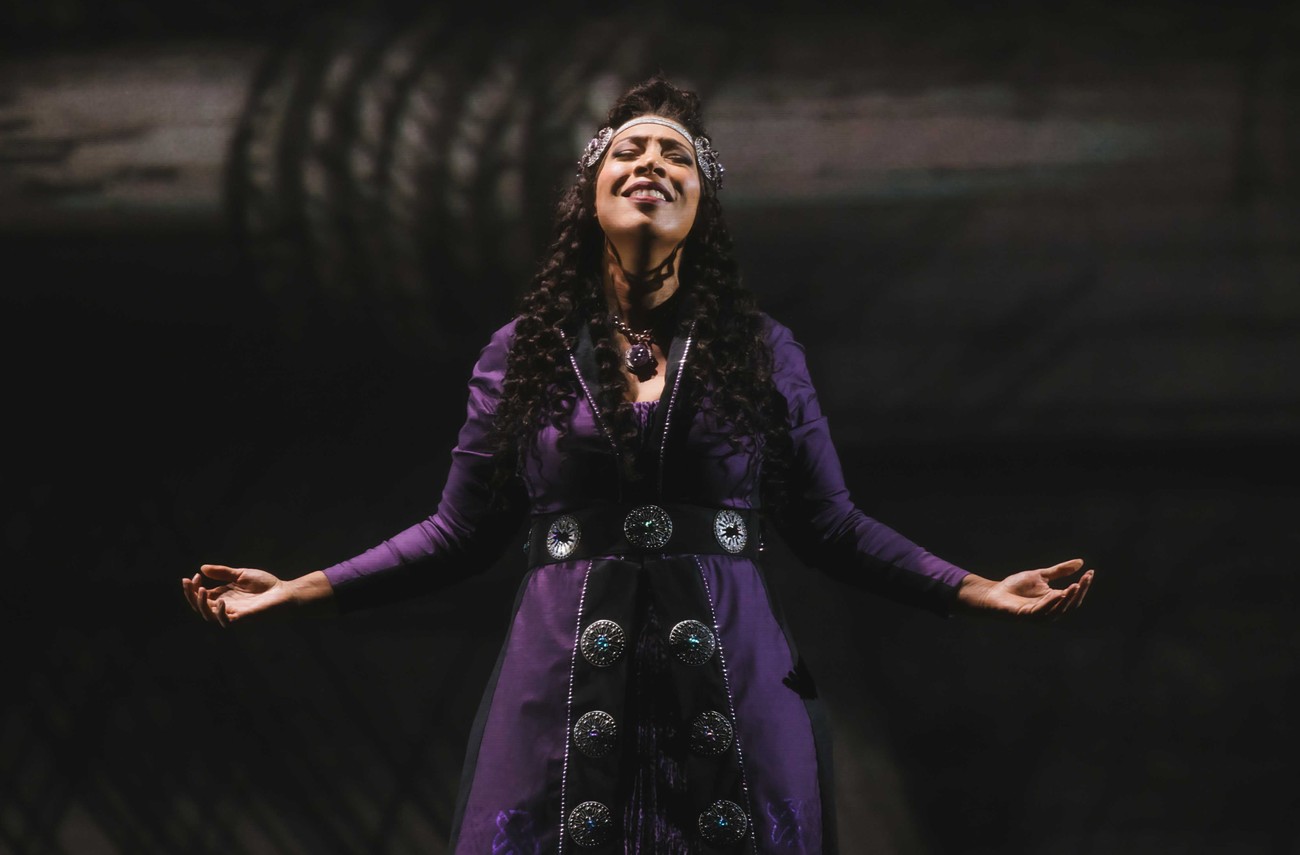If you live in Seattle and you’ve never been to the Seattle Opera, you’ve been wasting a precious and delicious resource, and it’s time for this to stop.
In addition to the fact that classical music is scientifically super good for you, like both in your brain and your body, there’s also the fact that Seattle Opera has a rep among the other world-class opera companies for being… kinda wacky. Unconventional, let’s say.
Back in the seventies, when the New York Metropolitan Opera was pushing their buttoned-down white-tie exclusivity, Seattle Opera was out here extolling the virtues of the craft to the great unwashed, via airplane skywriters and lapel pins reading “OPERA LIVES.” Tickets are surprisingly affordable for a major opera company, usually starting at $35, and often include heavily discounted rush tickets on the day of the show. Since its start, Seattle Opera has always invited one and all to come check out the scene, not just the rich tuxedos. (Don’t tell Dr. Frasier Crane.)
Another thing about Seattle Opera is that they fucking love Wagner. Former general director Speight Jenkins made it a goal for the company to perform all ten of Richard Wagner’s main operas when he took the reins in 1983, which they did. Wagner was also a big fave of Gerard Schwarz’s, who led the Seattle Symphony, the opera’s backup band, from 1985 to 2011. Between 1975 and 1984, the company did the entire 15-hour Ring cycle twice each summer, once in German and once in English, back to back—as baller a move as you’ll see in modern opera. It takes a whole week to perform it, and Seattle Opera was like “Cool, don’t care, we’re doing it. Twice. Every year. Come to it or don’t.” Wagner: It’s their thing that they do.
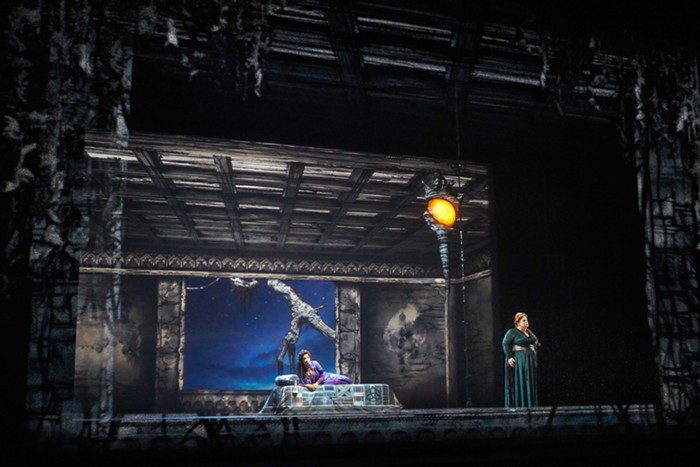
Now through October 29, the company is performing Wagner’s famously long chivalric love story, Tristan and Isolde. It’s based on the 12th-century Arthurian folktale of an Irish princess who falls in love with a knight—the nephew of her brand-new husband, Marke, the Cornish king—after they drink a love potion on the ship from Ireland to Cornwall. Then they have a saucy forbidden affair. The luminous Philadelphia-born soprano Mary Elizabeth Williams is our Isolde (except on October 23, when it’s Spokane’s own Heidi Melton in her operatic debut!), and “unequaled” German tenor Stefan Vinke stars as Tristan. Another of our marvelous homegrown American sopranos, Amber Wagner (no relation???) is Isolde’s handmaid, Brangäne, while East-Coast powerhouse Morris Robinson plays King Marke down in the bass.
It’s fortunately less rare in the opera universe than it once was, but still exciting and notable that both Isolde and King Marke are played by Black artists in this production. Robinson was in fact the first Black artist to ever sign with a major classical label, which happened as recently as 2007. You see it, but you don’t always see it.
As well, Toronto-born conductor Jordan de Souza is a first-generation Indian-Canadian, with family roots in Goa—and is among North America’s youngest major-league conductors at age 34. Seattle Opera has put together a really special team for this one.
Okay, so there’s all kinds of drama surrounding this drama. First of all, Tristan and Isolde supposedly carries a historic curse! If it’s not actually cursed, well, suffice it to say that this opera is notoriously difficult both to stage and to perform. Like, most skilled operatic singers just cannot physically sing these notes, to say nothing of doing so for four hours. Singers cast in the two titular roles frequently drop out before opening night, unable to continue—notably in 1904, tenor Ernst Kraus quit during the show, after the second act. The sets have been plagued with, say, stage palettes coming unmoored and sliding into the orchestra pit and singers sustaining onstage head injuries. Two conductors have straight-up dropped dead on stage, and the original Tristan, Ludwig Schnorr von Carolsfeld, died of a stroke at age 29 after his fourth performance—often attributed to the colossal, nearly inhuman exertions placed upon the body of a heldentenor in this role, although who can say for sure. The opera itself, she rebels.
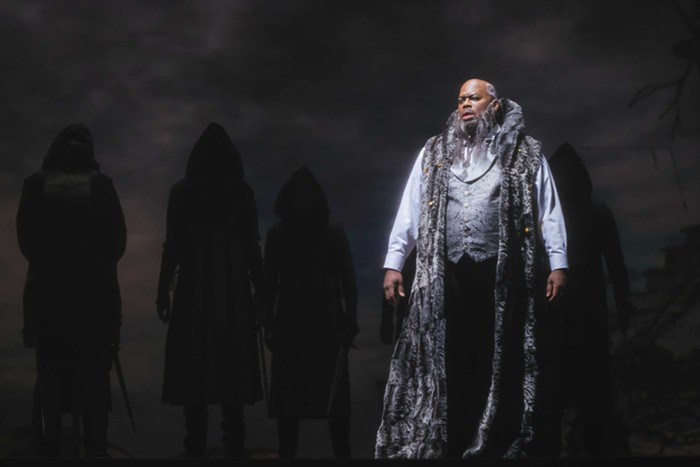
So I’m sure it’s by design, but the Halloween season is the perfect time of year to put on T&I. I absolutely do not want anyone to drop dead during any of the performances of this opera. I’m just saying! Spooky!
Meanwhile, Richard Wagner brought his own batch of drama to the pot. Wagner was the Prince Rogers Nelson of opera, not only because his compositions were salacious and spectacular but also because he really liked to fuck. This is germane to a discussion of Tristan and Isolde because Wagner turned around and enacted the plot in his own life: During the production of the show’s debut in 1865, he pretty much immediately started sleeping with conductor Hans von Bülow’s wife, Cosima, the daughter of Franz Liszt. They ultimately ran away together, as Isolde and Tristan do in the story.
Hilariously, Wagner also got exiled from Munich by the actual king for sleeping with people’s wives, just as the mythical Tristan did (well, more so in the folktale than the opera). Whoops.
I love how dude read his own libretto and was like “Sounds great! If only I could find a king’s wife to sleep with. Hmm, a conductor is like a king of the opera? I guess?”
Also important to mention is Tristan and Isolde signifies the cultural pivot into the Romantic era of classical music, thanks to the tons and tons of dissonance (e.g., "the Tristan chord," which we’ll discuss later) he loaded it with, starting right from the first note in the prelude. People lost their minds when they heard that shit. Tristan and Isolde was also an unprecedented-in-the-genre display of chromaticism, harmonic suspension, and tonal ambiguity, and it inspired hella composers over the century to follow. Tremendously influential opera upon Western classical music. Huge deal.
Since they’re the #1 Richard Wagner Foam Finger Fan Club, it’s no surprise that Seattle Opera, Seattle Symphony, and conductor Jordan de Souza are knocking this thing out of the park with an all-star team. Mary Elizabeth Williams as Isolde is the glittering jewel in the crown here, and she’s honestly reason enough for you to show up. Hers is a familiar face around McCaw Hall, having won Seattle Opera’s Artist of the Year award right off the bat for her 2011/2012 Seattle debut as Serena in Porgy and Bess, and later starring there in the eponymous role in Puccini’s Tosca and as Queen Elizabeth I in Donizetti’s Mary Stuart, among many other productions. It’s hard to think of a sweeter choice for Isolde, which is often called the mother of all operatic roles. Williams’s voice is just immense.
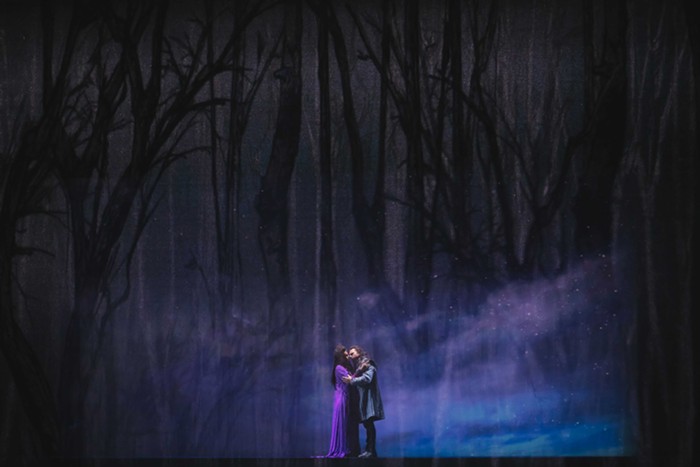
Vocal pyrotechnics abound in this production, though, particularly from Amber Wagner’s Brangäne, as she scolds and warns Isolde of upcoming peril. Stefan Vinke as Tristan is pretty chilled-out in comparison but still packs the power, like an iced quad-shot latte, while Morris Robinson as King Marke brings more fire and smoke and warmth and texture, like the air quality in Seattle right now.
Yes, this is a four-hour opera. With two intermissions built in, it clocks in at just under five. Without spoiling too much about the show, I’ll admit that the first act can drag, where they’re bickering back and forth and getting all the foreshadowing done. But it gets meaty later, I promise. There are stabbings! If you’re bored during Act I, they have clever projected
animated backgrounds, with undulating waves and winking stars, to fascinate yourself with. And all the costumes are dumbfoundingly beautiful, of course, as one would expect. You will not be able to peel your eyeballs from Isolde’s twinkling purple sparkle-cloak—it looks like it’s part of the CGI backdrop. I want one for my bed.
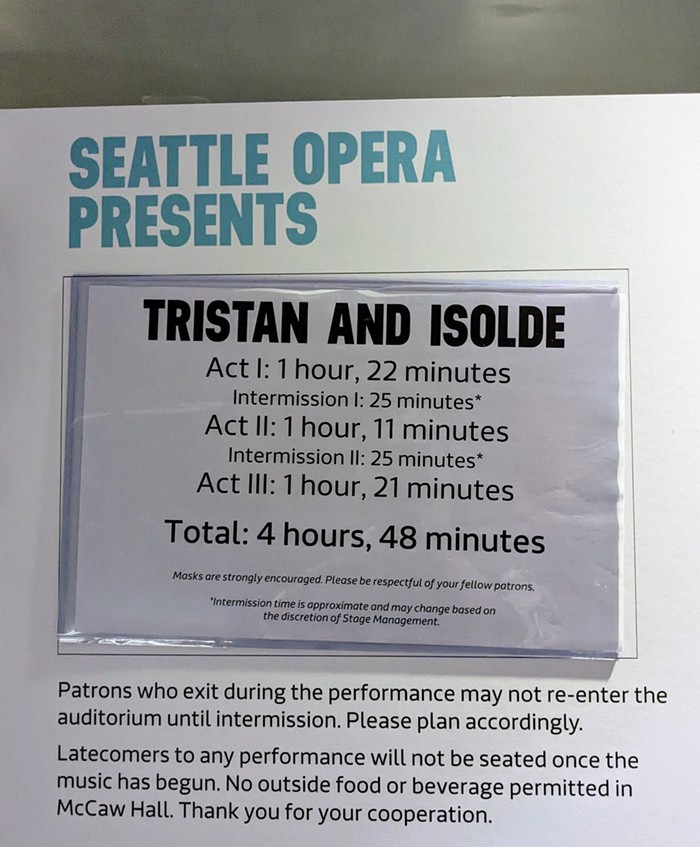
If you haven’t been to the opera before, I acknowledge that a five-hour Wagnerian tragedy is an ambitious place to start. A lifetime ago, I majored in classical piano, and my partner was a music ed major, so I figured we’d be equipped to take on this task… and lemme tell ya. Whew. There were times. But if you’re gonna try your luck on Tristan and Isolde—and you should! Because it’s breathtaking!—here are a few pro tips before going in:
- You don’t have to dress up! They don’t even make you dress up at Canlis these days. That said, it’s FUN to dress up, and if you decide to, feel free to get zany with it. This ain’t the Met, aforementioned. I wore a cheapo SHEIN dress with tigers all over it, and my dude wore a suit jacket over an inside-out Iron Maiden shirt + black jeans and Vans. Just make sure it’s something you can sit in for hours.
- Even if you don’t dress up, maybe show up a little early so you can marvel at the beautiful outfits swanning around in the lobby. It’s really a scene. Watching the crowd preening before the show is a vital part of the evening’s entertainment, I say.
- More on dressing up: In keeping with the Seattle Opera’s whole hey-we’re-unconventional thing, they’re doing a few theme nights. There’s a medieval dress-up night on Friday, October 21! German Day is Sunday, October 23, so I’m guessing dirndls and lederhosen, and then there’s a Halloween costume competition at the closing night on October 29. Cute!
- Friday October 21 is also pay-what-you-will night—you’ll wanna jump on this on the day of the performance, either online or in person at McCaw Hall. Minimum ticket price for this show is $15; the suggested donation is $35.
- No, you don’t need to speak German, because there are subtitles! Projected above the stage! So, er, supertitles! This is so helpful even when I’m watching regular TV in English, and I can’t imagine what the opera UX was like before we had this technology. Sure, music is good and nice to hear, but if you can’t understand the plot, that’s a long time to sit. But now you can.
- Frankly, you don’t want your seats to be too good, because then you can’t see into the orchestra pit, and that’s half the party. If you sit too close to the stage, you’ll only be able to see [the very energetic!!] de Souza’s baton-wavin’ arm + head bobbing up and down from behind the little parapet. I like to see what they’re up to in there.
- Listen for what my partner calls “park and bark,” where one of the characters says something and then the Greek chorus suddenly appears from the dark and is like “Yes, it is true, this thing he said.” (This phrase also applies to a performer who just stands in one fixed spot and belts it out, like Pavarotti did, rather than moving around the stage. I say it’s both.) Richard Wagner was somewhat obsessed with Greek drama, and it’s totally a signature move of his. I plotz at this every time.
- Listen for the Tristan chord! It’s in the leitmotif at the very top of the show and persists throughout. Once you taste it, everything else will taste like it. The dissonant chord comprises F-B-D#-G#, and by itself, it’s nothing shocking to our 21st-century ears, but it’s contextually tweaked by the fact that the chord takes several hours to resolve. Well, it does resolve much earlier than that… just to another dissonant chord. This sounded radically clashy to Romantic-era European earballs, and it was super fucking metal of Wagner to put it in an opera. Folks didn’t know what to do.
- The tension that begins with the Tristan chord doesn’t resolve until the end of the third act, when Isolde sings: “In the heaving swell, in the resounding echoes, in the universal stream of the world-breath—to drown, to founder—unconscious—utmost rapture!” So listen for that part too. You may or may not hear applause when it finally strikes.
- You hear the Tristan chord all the time nowadays, by the way: it’s featured prominently in the Radiohead song “Idioteque,” for example, which itself borrows from a whole ode to the Tristan chord, ”mild und leise” by Paul Lansky (1973). So you could prefunk on the Tristan chord by doing a little YouTubing beforehand.
- Do not chug your lobby wine when you hear the five-minute bell to get to your seat, or the next act will quickly turn into a hostage situation. Ask me how I know. I have never had to pee so badly in my entire life.
- If you cannot take it any longer, it’s okay to leave at intermission! I know you’re not supposed to tell people this, but I think of loving opera as a process, and sometimes a slow one. These things were designed before TV and smartphones gave us all ADD, and Wagner’s operas are an hour or two longer than your average Mozart or Puccini joint. If your brain isn’t enjoying it anymore and you stay, you’re just going to hate opera going forward and never return. So if you’re done, leave at one of the buzzers. You’ll do better next time.
Seattle Opera’s production of Tristan and Isolde runs on various dates at McCaw Hall in the Seattle Center now through October 29. If you’d like to read more about the show, please see local music writer Gavin Borchert’s excellent in-depth review on Opera Wire here.
